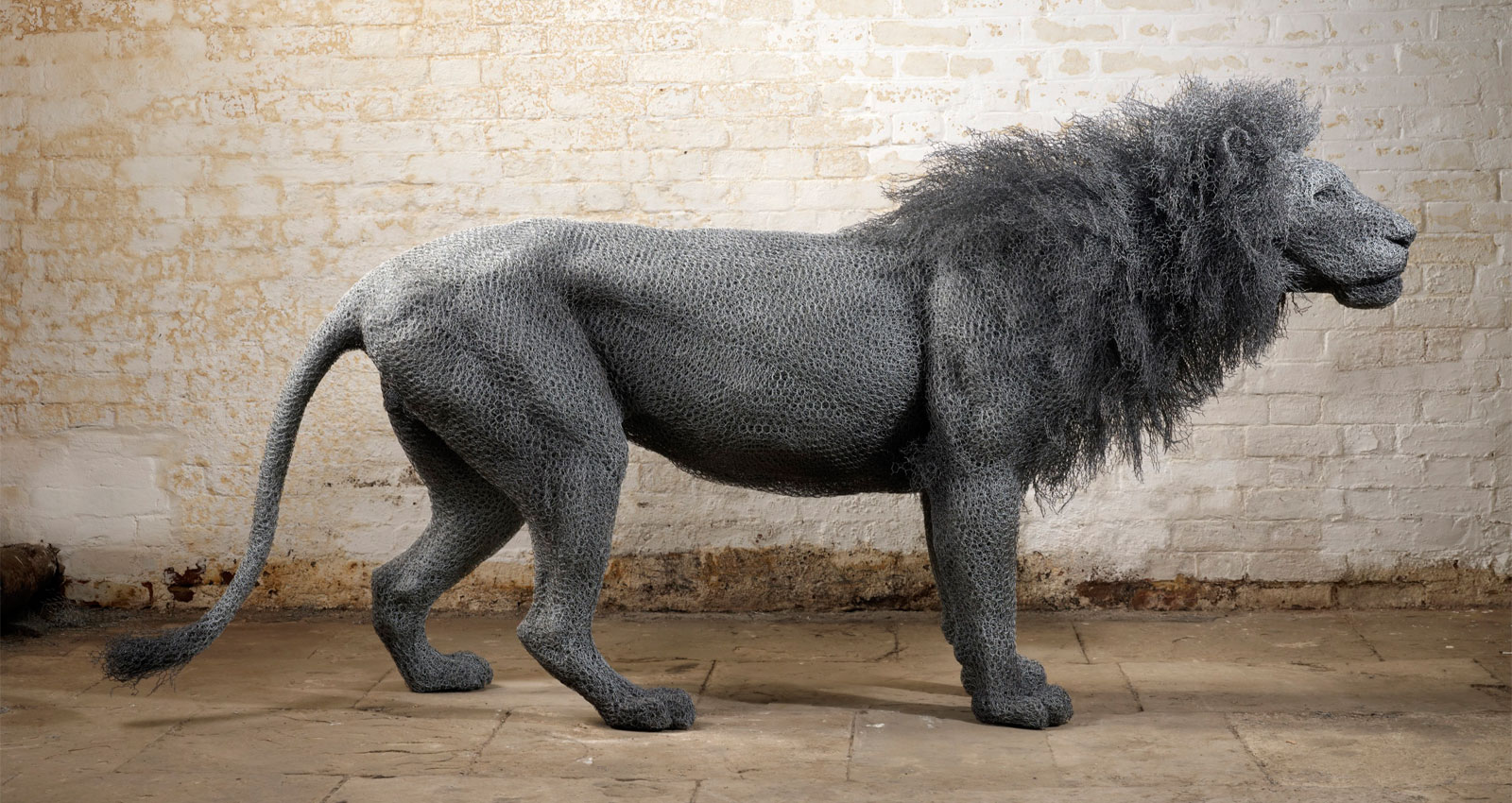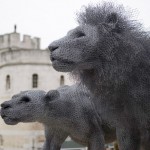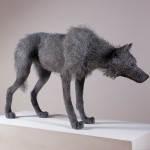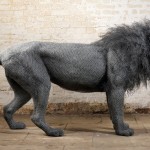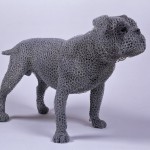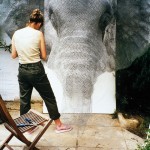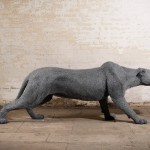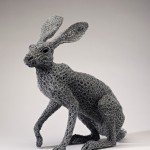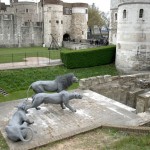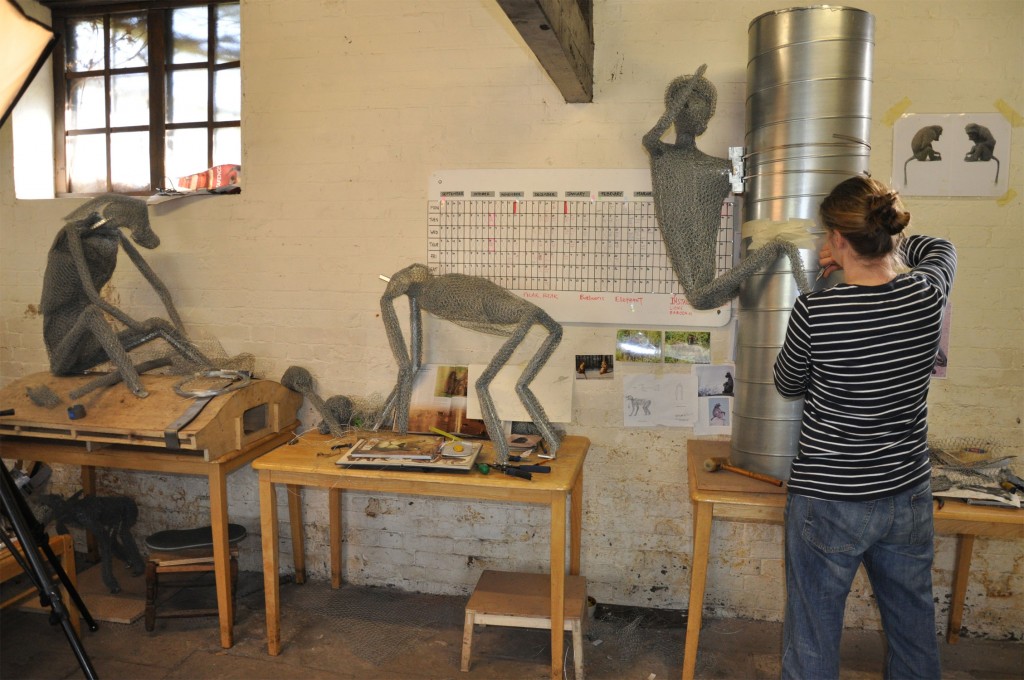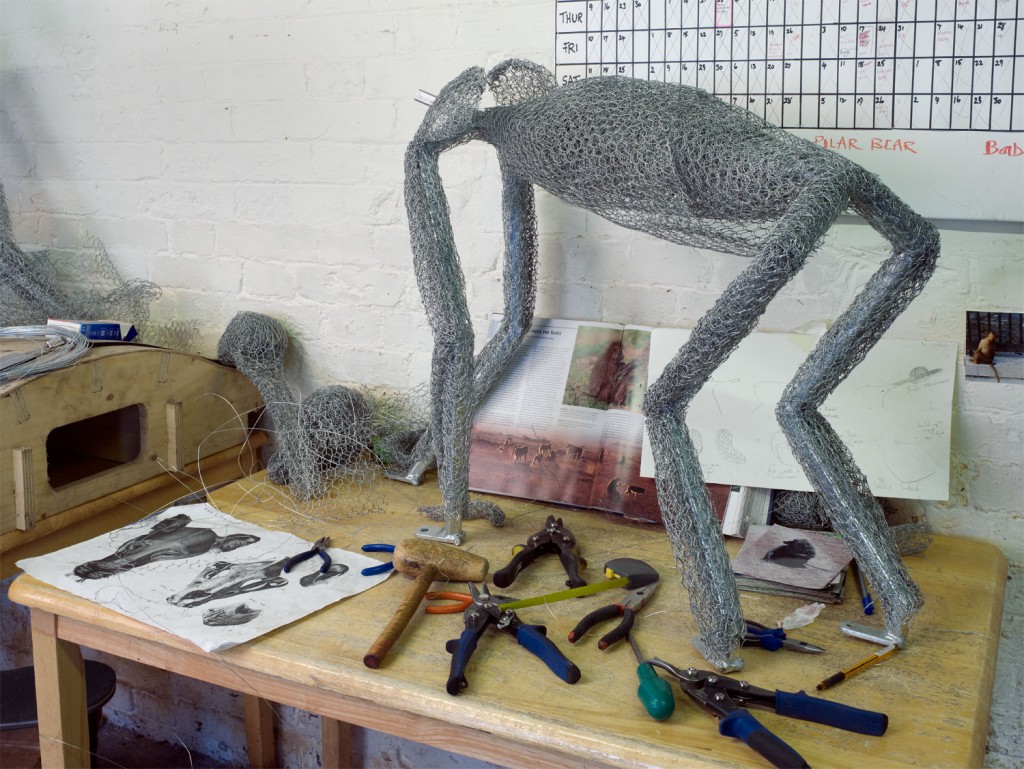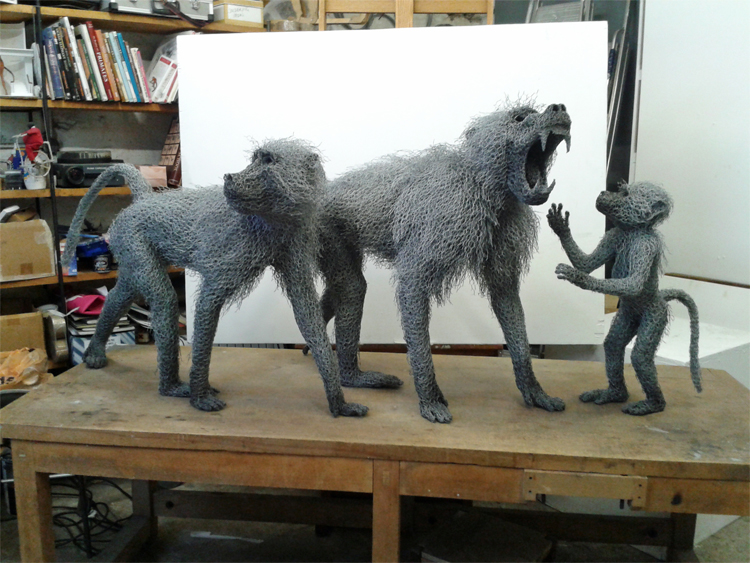Interview With Magnificent Sculptor Kendra Haste
I’m personally pretty excited about today. Kendra Haste is a truly ground breaking modern sculptor of animals who has been featured on This Is Collossal, out on My Modern Met, not to mention Blaze Press and many many more fantastic websites. After learning of Kendra’s extraordinary installation at the Tower of London I was just completely blown away.
But first, if you aren’t aware of who Kendra Haste is, maybe we should just check out some of her off the hook art first. Otherwise you guys will be just clueless for the rest of this fantastic exchange.
So you can see from just the small sampling of Kendra’s work I’ve included here that she is quite amazing. Somehow Kendra manages to breathe life into rebar and chickenwire in order to depict animals that seem to be caught in the act of moving and on the verge of springing into life. So, I obviously thought, Kendra is just fantastic, wouldn’t it be awesome if I could figure out a way to get in touch with her and ask a few questions? And miraculously, Patrick Davies was kind enough to connect me with her and facilitate this interview for you today. Thanks Patrick!
Can you remember the first moment when you realized that sculpting with wire would work? How did this artistic epiphany happen? Because its a stroke of genius.
I have always drawn and made things but working with wire really came about when I was at art college. I used to draw three-dimensionally with a linear, binding wire and that has developed over the years to the more robust, substantial sculptures that I make today. The wire mesh is commonly used in sculpture practice to make an armature with other material, such as plaster or clay applied on top, but I always found the wire form more aesthetically interesting. So I began to use the wire mesh as a sculpting material on its own.
Unlike the linear binding wire, with the mesh I was able to sculpt volume and by building it up in layers it was possible to depict the musculature of my animal subject adding to its sense of life and animation rather than a deadening solid surface.
On your site you have a photo of you working amongst 3 or 4 animal sculptures… and one is on an extremely flimsy table! The photos of your work scream heft, and significance. And yet, they must be fairly light? Do you start them with rebar? Or some frame? How heavy do these sculptures get?
Depending on the density of the sculptures they can vary in weight. The more solid, robust pieces (like the ones made for the Tower) are sculpted around a steel internal frame and can become fairly heavy, although not as heavy as a bronze would be. The big male lion at the Tower weighed approximately 250 kilos. Other sculptures I make are just made using layers of wire mesh and binding wire. The mesh can be surprisingly strong and these pieces are much lighter.
(Lets pause the interview right here for a second. Kendra graciously supplied me with some really fantastic photos of her baboon sculptures as they were in progress. You can see the frame here in these photos, the base of which she used for the build up from.)
I see the movement of your drawings as equaling the movement of your sculptures. Both have lines and curves that are pregnant with movement. Love it. Which do you prefer? The act of sketching and drawing and planning? Or the physical act of sculpting the forms?
I spend as much time as possible observing and sketching the animal subject before starting the sculpture. When I feel confident that I have understood the form, movement and behaviour of the animal I start work in the studio. I love both drawing and sculpting and each feeds the other. While working on a sculpture I will often draw out the piece alongside to help work out the anatomy and resolve the form. Although I think the physical act of sculpting the form is the most satisfying.
As a Yank, I spent a year in England and London has definitely become my favorite city in the world since then. And in my comings and goings the Tower of London became a favorite haunt. You currently have an installation there until 2021? How did that come to be? I’ve searched and searched to learn more about the selection and if they came to you or if it was a competition? It’s really a fantastic coupling of location and art to tell a wonderful story of the Tower’s history and the menagerie that used to be housed there.
The ‘Royal Beasts’ commission at the Tower of London was an open competition. I made initial concept drawings with examples of my work , was shortlisted and then pitched for the project. The Tower of London, as you say, is an extraordinarily special place and I was thrilled to be selected. I think what made me a favoured candidate was the wire material and the connection of the wire to drawing. The Tower have some beautiful old engravings and etchings of some of the animals kept there and the mesh sculpture was a close approximation of these in three dimensional form. They also liked the idea of using mesh, a material of confinement, to create the animals. Wire, even when used compactly, suggests an ephemeral quality, which is fitting when depicting these ghost-like creatures from the Towers past.
Ok, stretch goal time… If you could place any one of your sculptures anywhere you’d like… without restraint, where do you think the perfect location would be and which piece do do you think you would place?
I’m not sure if I could better the Tower as a location to have work! But a couple of years ago I was shortlisted for a project to create some large scale pieces for an equine centre in Arizona which was situated on the edge of the desert and I was lucky enough to visit.
Unfortunately it was not to be, but it led me to do lots of research into the origins of the horse. I was amazed to find out that although domesticated horses were first bought over to the region by the Spanish conquistadors in the 1500’s that the ancestors of the modern day horse originated and evolved there, as fossils found have proven. So I think a tribute to the wild mustang and a nod to their history and belonging to the desert would be a dream project. The opportunity to do something of a large scale on such a beautiful creature within an expanse of wilderness like the Arizonan desert would be extraordinary!
As a final question – do you have any new works underway that we don’t know about? Any hints?
I am currently busy working on some Canadian wildlife commissions of a sea lion and a grizzly bear to go into private homes in Whistler and Vancouver. I am also making a large deer stag for a private farm estate in England. I continue with my research on horses, I have started making a life size mustang, which will hopefully culminate in an exhibition of work on the horse at the end of 2016 and might even involve a trip back to the Arizonan desert, here’s hoping!

